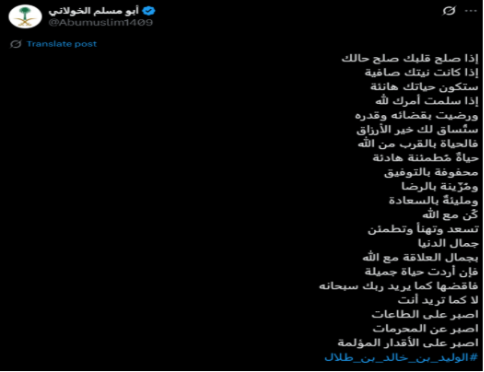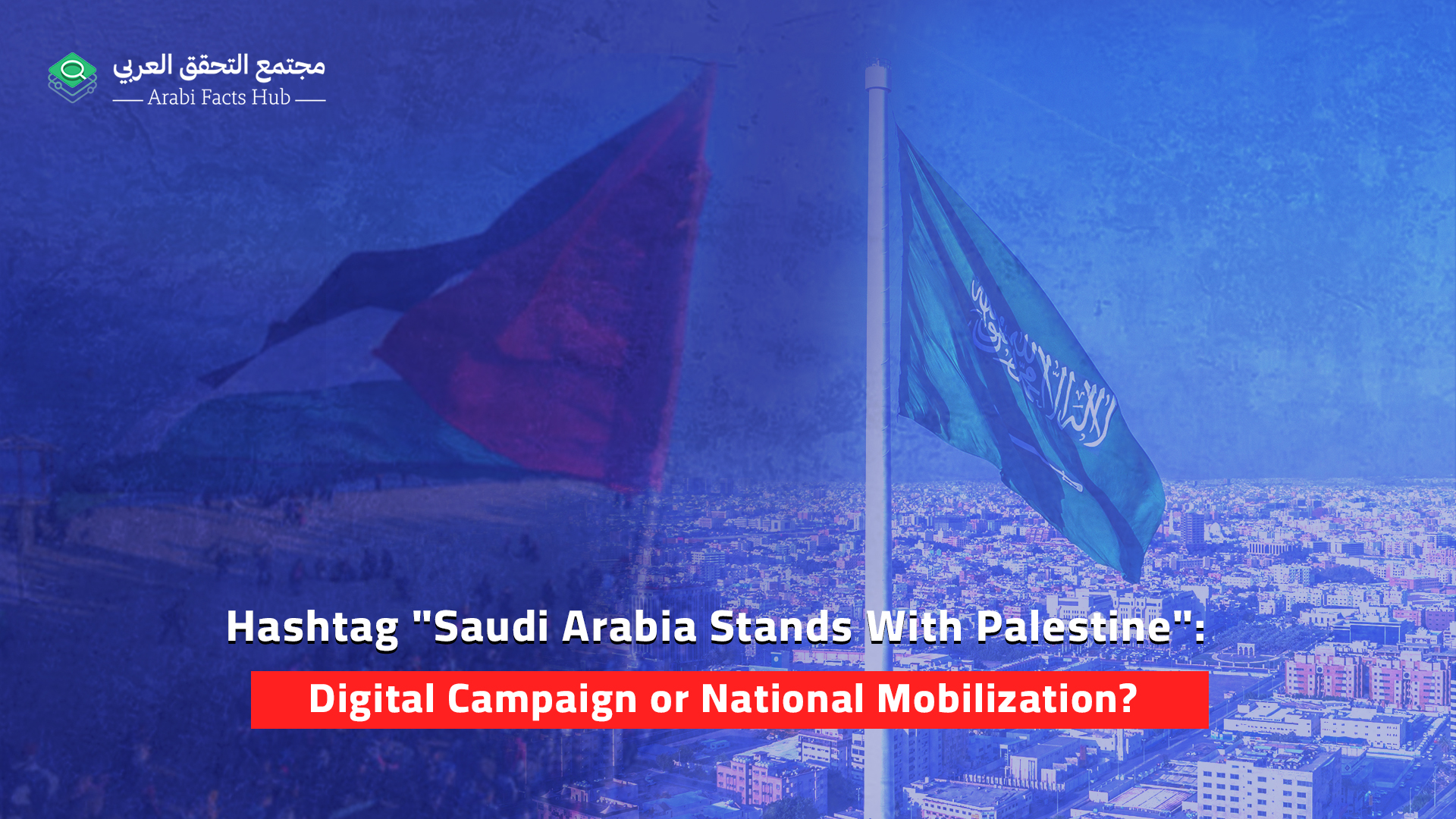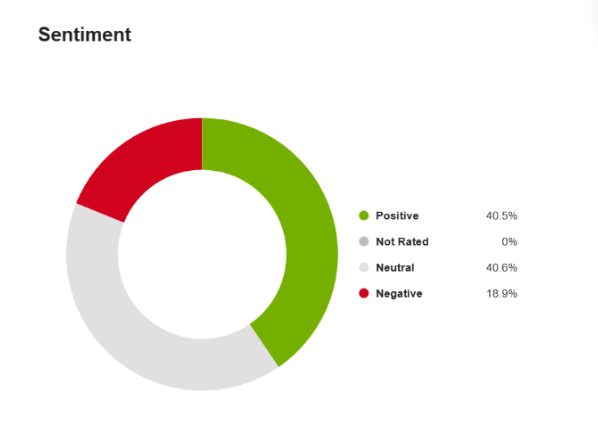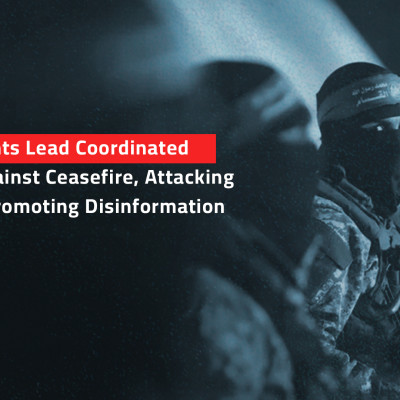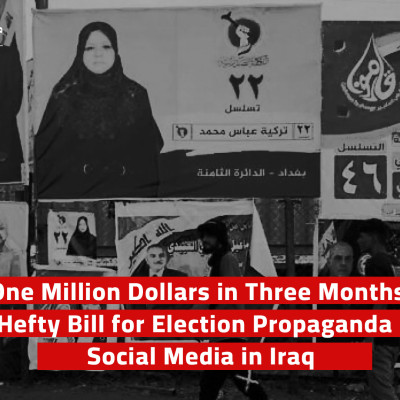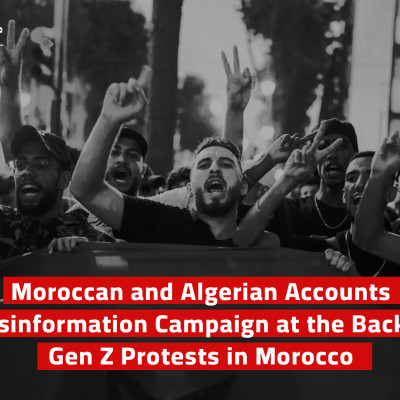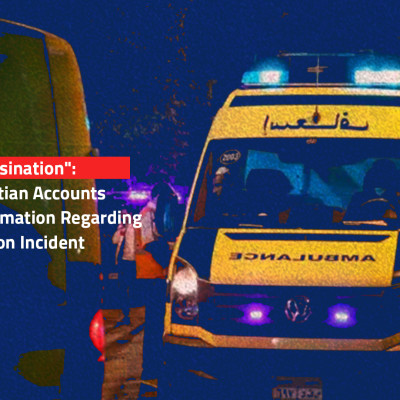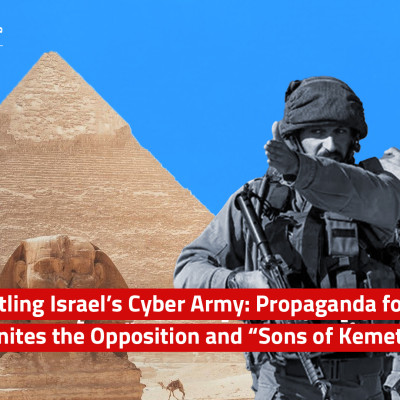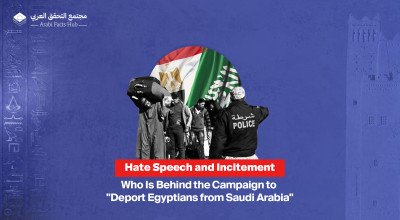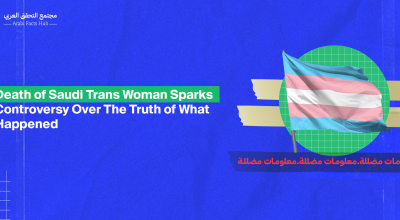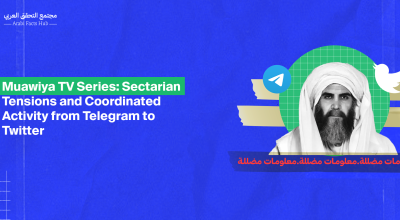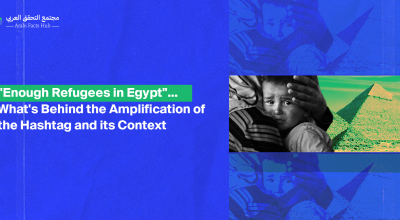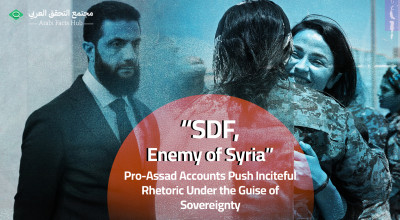Between July 28 and 30, 2025, the United Nations headquarters in New York hosted an international conference titled the “High-level International Conference for the Peaceful Settlement of the Question of Palestine and the Implementation of the Two-State Solution,” jointly sponsored by Saudi Arabia and France. The conference concluded with the New York Declaration, which outlined a practical 15-month timeline for establishing an independent and secure Palestinian state alongside Israel.
Around 160 UN member states took part, while the United States and Israel rejected the initiative. Meanwhile, France, the United Kingdom, Canada, and several other countries announced plans to formally recognize Palestine during the UN General Assembly in September 2025.
The conference coincided with new agreements and memorandums of understanding between Riyadh and Ramallah, as well as a joint effort to launch fresh diplomatic dialogue linking Saudi foreign policy more closely to the Palestinian cause within a broader geopolitical framework.
In the aftermath of this high-profile event, online activity under the hashtag "#السعودية_تنتصر_لفلسطين" (Saudi Arabia Stands With Palestine) surged. Thousands of users expressed gratitude, solidarity, and support for Saudi Arabia’s role. Yet, what appeared to be an organic outpouring of public reaction contained within it repeated messages published by accounts with programmed activity, and propaganda narratives, according to analysis by Arabi Facts Hub.
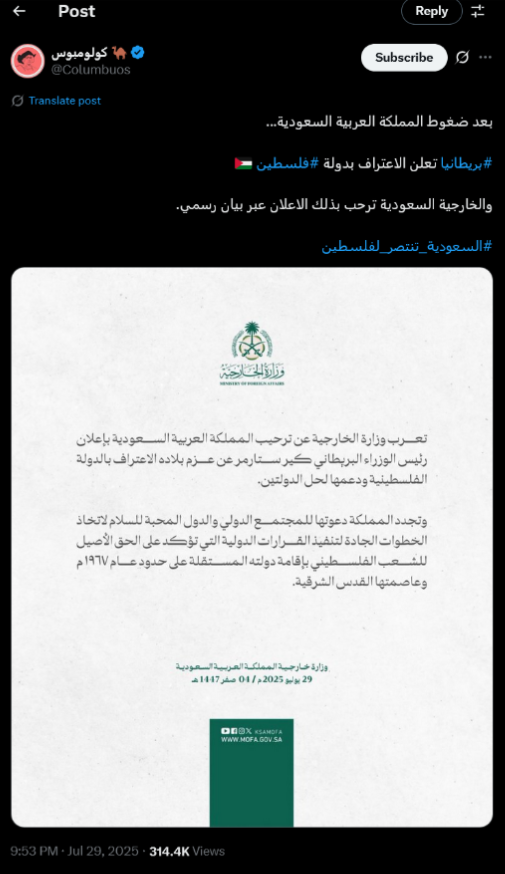
This report analyzes the intensive blogging campaign on the hashtag “#السعودية_تنتصر_لفلسطين” (Saudi Arabia Stands With Palestine), based on Meltwater data and an analysis of a representative sample of 20,000 posts out of a total of 68,000. It aims to deconstruct temporal patterns, monitor the nature of interacting accounts, approach the rhetorical and narrative structure, and identify the geographical and network centrality features of pivotal accounts in the campaign.
Indicators of a Coordinated Campaign
The hashtag #السعودية_تنتصر_لفلسطين (Saudi Arabia Stands With Palestine) saw almost no traction through the first half of May 2025, aside from two brief spikes on May 8 and 9, when posts jumped to 495 and 722, respectively. These early bursts aligned with media reports suggesting the U.S. was prepared to move ahead with a deal with Saudi Arabia even without Israel, as well as news of a key diplomatic meeting in Jeddah between Saudi Foreign Minister Faisal bin Farhan and Palestinian Vice President Hussein Al Sheikh.
Activity then quickly dropped, remaining nearly silent for almost two months, with daily mentions rarely rising above a few dozen. What initially looked like a fringe hashtag remained dormant until a sudden surge took off at the end of July.
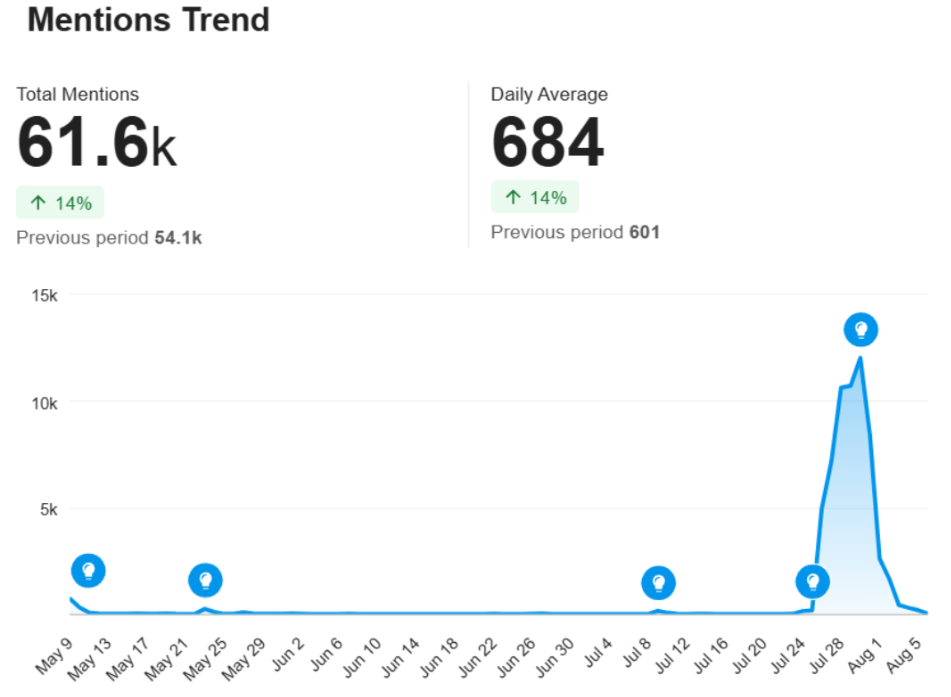
On July 24, the hashtag #السعودية_تنتصر_لفلسطين (Saudi Arabia Stands With Palestine) suddenly came back to life, registering 136 posts and climbing to 169 the next day.
The real turning point, however, came on July 26, when activity surged sharply, setting the stage for a late-month peak that coincided with the United Nations International Conference on the Peaceful Settlement of the Palestinian Question and the Two-State Solution, hosted by Saudi Arabia and France in New York from July 28 to 30, 2025.
Delegates at the conference announced the "New York Declaration," a 15-month roadmap for establishing a demilitarized Palestinian state alongside Israel. The plan called for disarming Hamas, releasing hostages, and implementing reforms within the Palestinian Authority. France and Saudi Arabia jointly pressed for broader international recognition of a Palestinian state, with France pledging formal recognition in September and several European nations signaling similar moves.
The significant increase in posts and potential views in late July suggests that the digital surge was a deliberate reaction to diplomatic events rather than a spontaneous expression of public sentiment, which can be attributed to this high-stakes political environment.
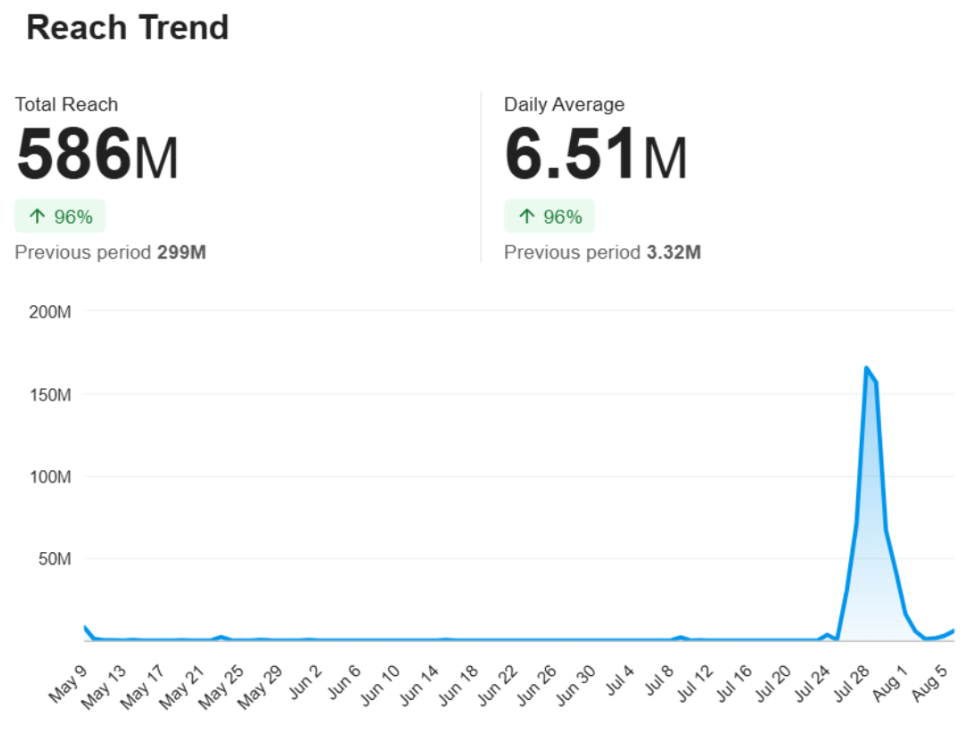
Potential reach data shows an undeniable surge. From July 26 to 30, the hashtag #السعودية_تنتصر_لفلسطين (Saudi Arabia Stands With Palestine) garnered over 500 million estimated views. Daily views peaked dramatically, with 31 million on July 26, 72 million on July 27, and an impressive 168 million on July 28.
The unprecedented reach of this hashtag surpasses typical organic political or solidarity campaigns. The rapid transition from minimal engagement to widespread posting within a brief period strongly indicates coordinated amplification, likely orchestrated by commercial accounts or organized networks of automated reposting. This sharp increase suggests a structured propaganda initiative rather than an entirely spontaneous surge of public interest.
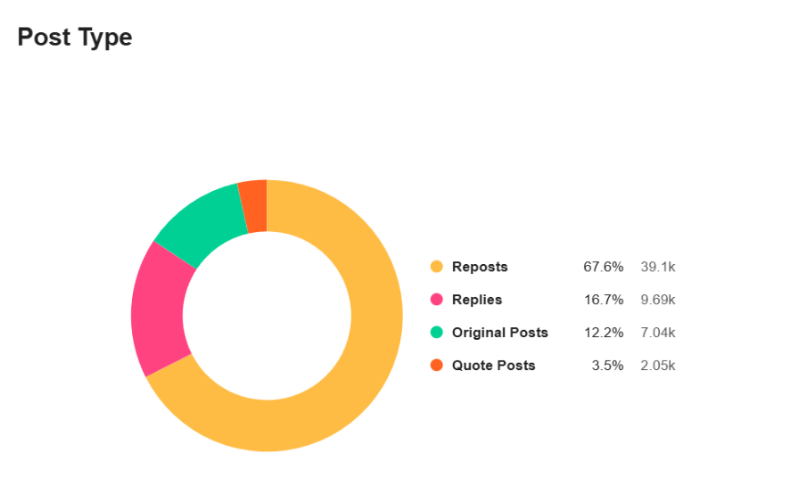
Out of all the activity recorded under the hashtag #السعودية_تنتصر_لفلسطين (Saudi Arabia Stands With Palestine), retweets constituted the largest portion at 39,100 posts (approximately 68.5% of the total). Replies followed with 9,692 posts (around 17%), while original tweets accounted for 7,038 posts (12.3%). Quote tweets were the least frequent, with 2,045 posts (3.6%).
This high volume of content redistribution, significantly surpassing original content, indicates a coordinated amplification effort rather than purely spontaneous engagement.
Sentiment Analysis
The hashtag #السعودية_تنتصر_لفلسطين (Saudi Arabia Stands With Palestine) may appear to be driven by solidarity, but sentiment analysis draws a picture other than just a straightforward outpouring of digital support. Neutral tweets constituted the majority at 41.1%, with positive sentiment closely following at 40.0%. However, a notable 18.9% of reactions were negative—almost one in five posts—which contradicts the common assumption that such campaigns reflect widespread, unqualified agreement.
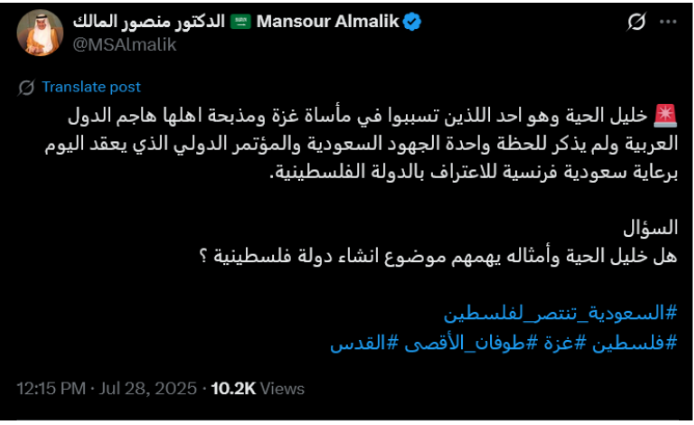
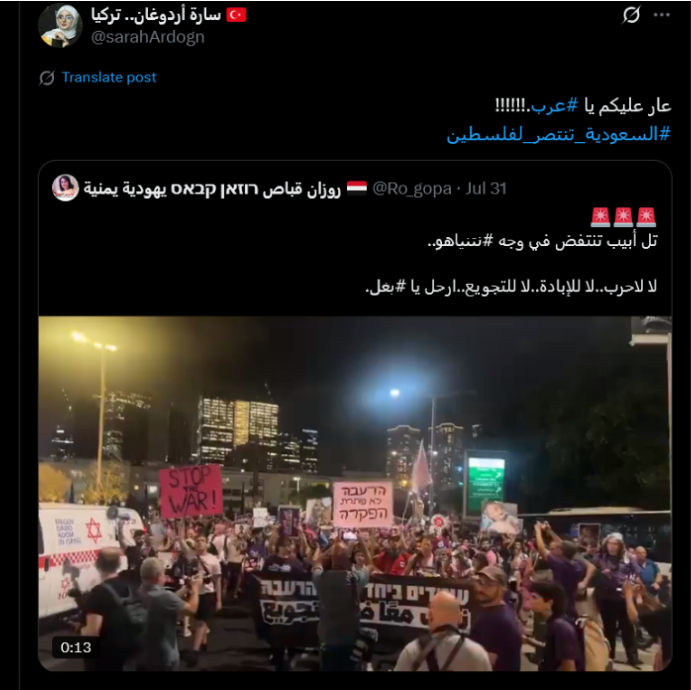
This distribution highlights an underlying tension in the digital discourse surrounding the hashtag. Instead of a single, unified direction, the campaign became an arena for debate between two opposing narratives: one praising Saudi Arabia's stance on Palestine, and another critically re-evaluating it, exposing its contradictions and broader regional political context.
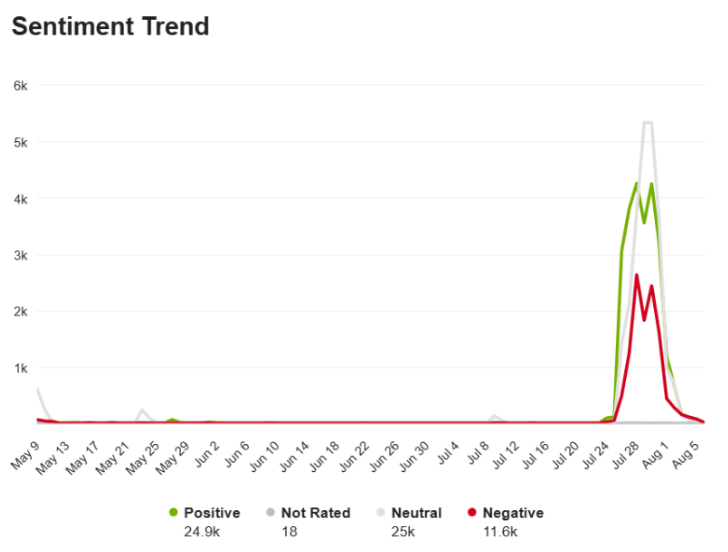
Before July 26, when the coordinated campaign started, neither positive nor negative posts showed a significant increase. Following that date, there were rapid surges in activity: positive sentiment reached its highest points on July 28 with 4,375 posts and again on July 30 with 4,338 posts. Simultaneously, negative discourse also escalated, with 2,687 posts on July 28 and 2,535 on July 30. This indicates the campaign drew a significant critical audience, nearly equal in presence, which cannot be dismissed as marginal or mere noise.
As for the substance of the content, despite the absence of a precise quantitative keyword analysis, there is a distinct divergence in the framing of the hashtag. While some users utilized it to commend Saudi Arabia as a "true supporter of Palestine," others perceived it as a public relations endeavor designed to enhance the image of a political system that was accused of incremental normalization with Israel.
In this sense, the sentiment analysis highlights more than just support or engagement; it exposes the underlying tension in the discourse and the symbolic limits of politically driven solidarity campaigns.
Geographic Distribution of the Campaign
An analysis of tweets containing the hashtag #السعودية_تنتصر_لفلسطين (Saudi Arabia Stands With Palestine), using Meltwater, shows that the digital activity was heavily concentrated within Saudi Arabia. In addition, there was minimal reach among the Arab diaspora and in Western countries.This geographic pattern is a key indicator for understanding the nature of the campaign and the actors driving it.
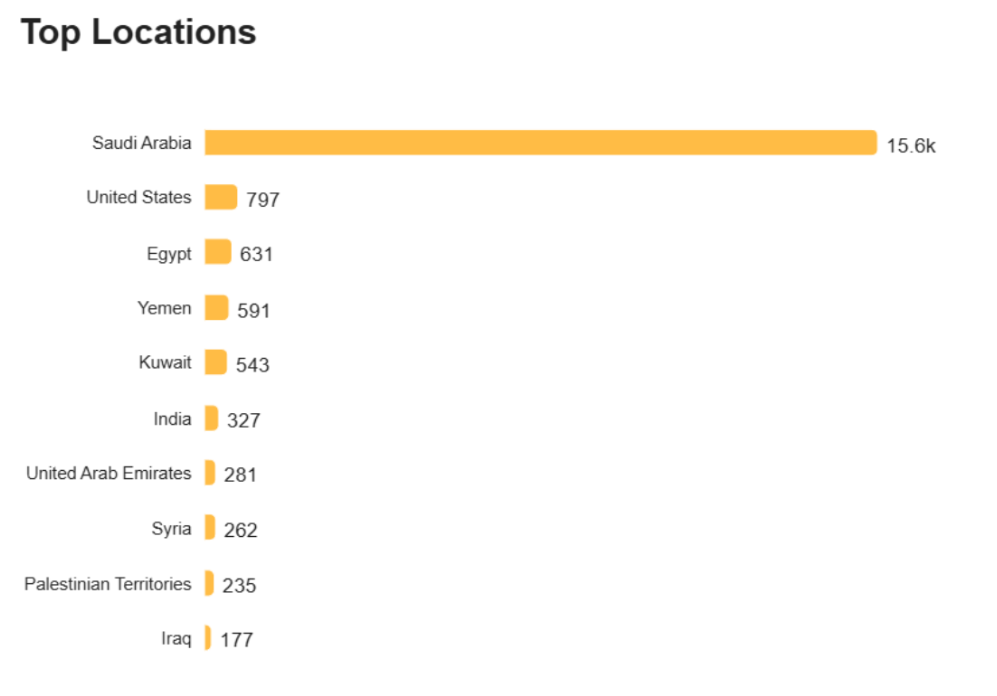
Out of the 20,000 posts included in the analysis, more than 15,800 originated inside Saudi Arabia, representing the overwhelming majority of all content. Such a striking concentration is unlikely to be coincidental; rather, it points to the central Saudi role—both in production and coordination—in driving the campaign, whether through individual user accounts or via commercial and organized amplification networks.
The United States ranked second with 808 posts (258 within the analytical sample), where sentiment analysis revealed a noteworthy distribution: 37.2% neutral, 34.1% positive, and 28.7% negative—roughly ten percentage points higher in negativity than the campaign’s overall average of 18.9%. This suggests a more visible debate among audiences outside Saudi Arabia, reflecting the diversity of active accounts and perspectives in that digital environment.
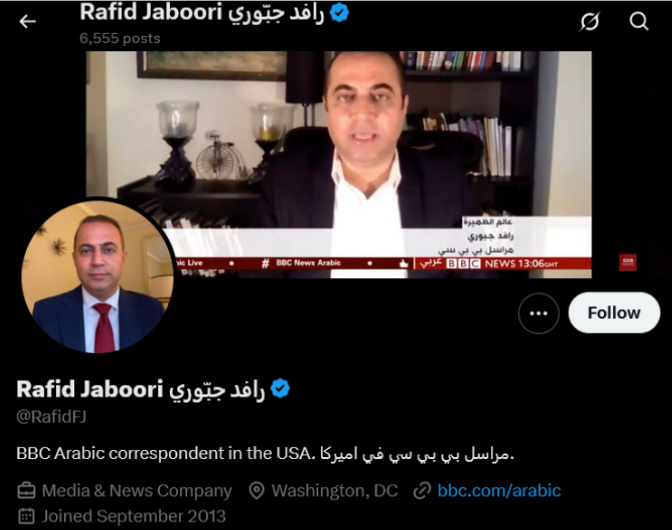
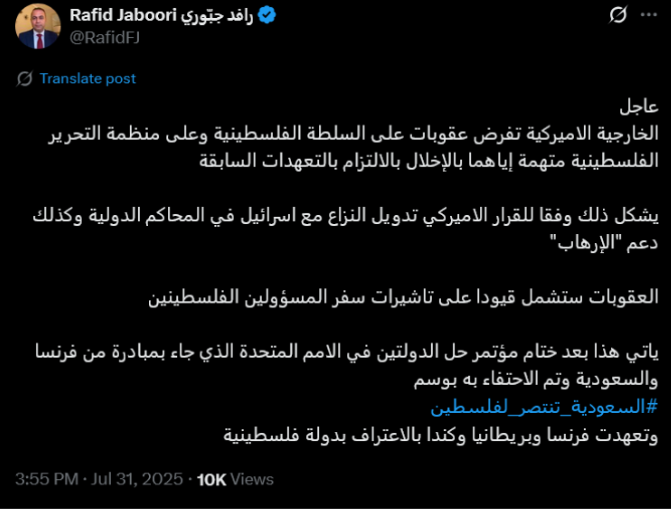
Egypt then follows with 629 posts, then Kuwait and Yemen (599 each), followed by the UAE (283), Syria (275), and Palestine (236) in the list of most participating countries.
Structural Analysis of the Discourse
While the hashtag initially seems to be a simple expression of solidarity, a deeper examination of the conversation reveals a more intricate structure. It combines narratives promoting Saudi Arabia with dissenting voices that scrutinize or challenge this portrayal.
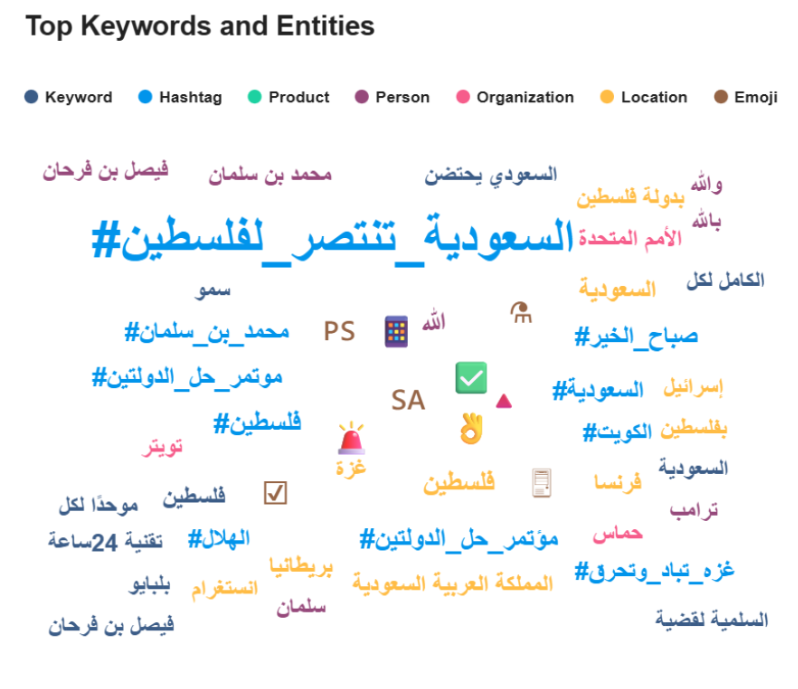
The most prominent discourse stream was the official diplomatic narrative, which borrowed the language of statecraft and international legitimacy. Posts frequently referenced figures like Crown Prince Mohammed bin Salman and Foreign Minister Faisal bin Farhan, tying the hashtag directly to the outcomes of the “Two-State Solution Conference” co-sponsored by Saudi Arabia and France.
Many tweets used phrases such as “Saudi Arabia recognizes Palestine” or “financial support through the World Bank,” even though no such formal announcement was made during the conference.
What was confirmed, however, was a Saudi pledge of $300 million in direct aid to Gaza and the West Bank, while other countries—such as Canada—announced smaller humanitarian packages (around $30 million). To date, there is no evidence of any World Bank role within the framework of the Two-State Solution Conference.
Much of this content originated from widely followed accounts, notably “Saudi Deterrence 1727M” and “Columbus,” which functioned more like central distribution hubs for promotional messaging than ordinary users.

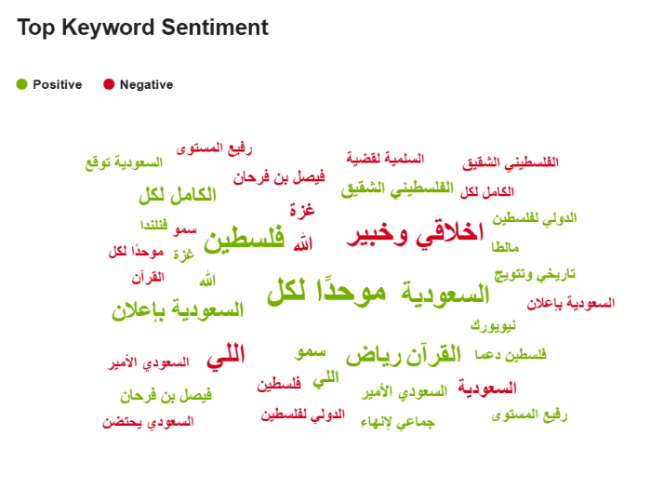
Repeated promotional slogans like “Saudis embrace the [Palestinian] cause” and “peaceful resolution for the Palestinian issue” were frequently seen, often alongside non-political hashtags such as #صباح_الخير (Good Morning) or #الرياض_الآن (Riyadh Now). This integration of political messages with lifestyle or commercial tags implies a mix of political promotion, marketing strategies, or possibly automated posting.
Data reveal that the hashtag's initial documented surge within the sample occurred from May 7 to May 10. This activity was primarily driven by smaller, less-known accounts, notably @tmrrah9, before a decline in engagement until late July.
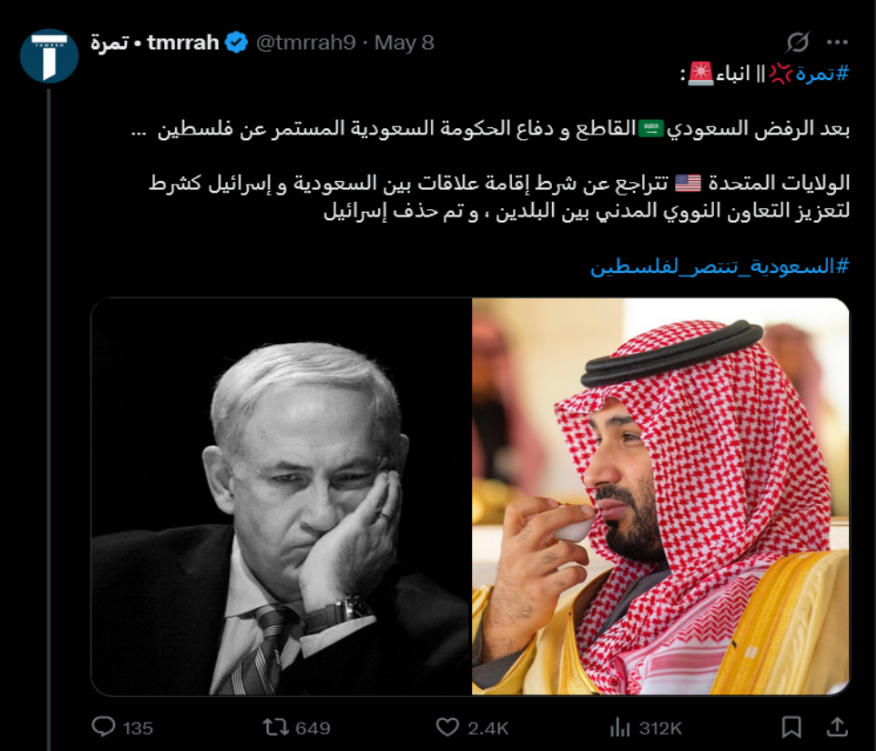
Network Analysis: Internal Structure of the Solidarity Campaign
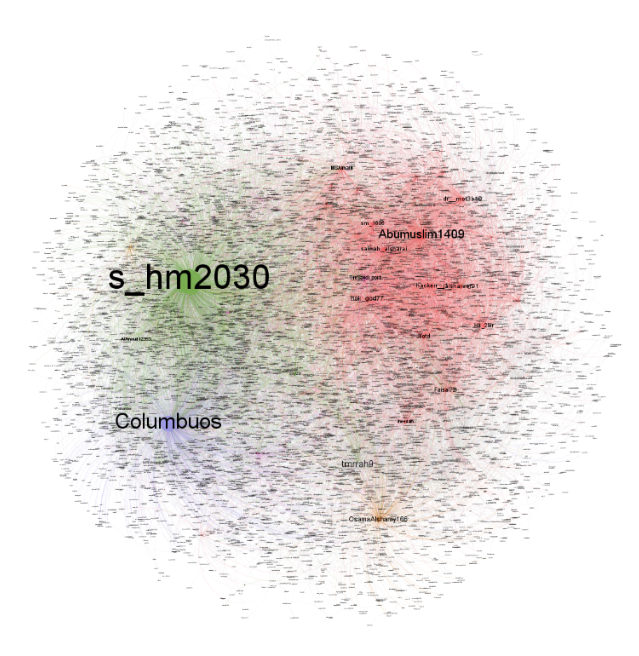
The campaign's network map reveals a complex visual landscape, dominated by a 'hub-and-spoke' structure, where large numbers of peripheral accounts revolve around a limited number of central accounts that play amplifying and guiding roles within the campaign.
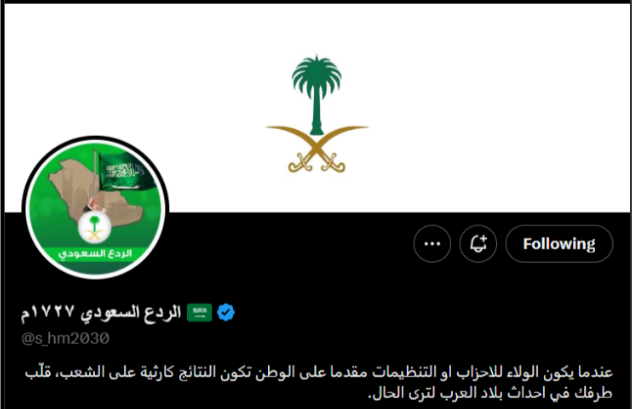
A striking feature of the network is the central role played by the account @s_hm2030, which appears to be the core of the campaign's amplification. This account is strategically positioned and heavily linked, acting as a crucial hub for content dissemination within the network. Its prominence in the diagram highlights its high level of centrality and the significant attention it receives within the campaign..
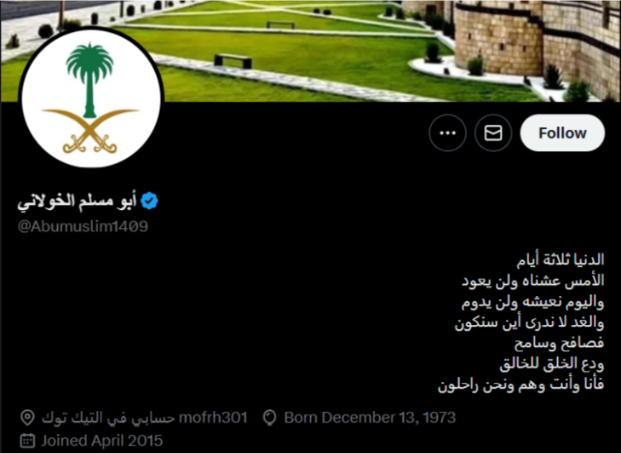
The account @Abumuslim1409 spearheads a significant red sub-cluster, characterized by hundreds of directly linked accounts. This suggests it serves as a central hub for a particular narrative thread within the campaign, possibly mobilizing a discourse with strong ideological or religious undertones.
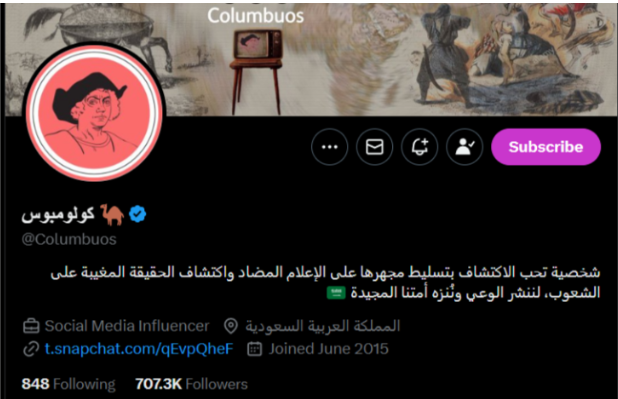
@Columbuos also appears as a dark blue central node within a more cohesive, albeit less dense, cluster than the others. This suggests technical amplification activity rather than a mobilization effort, or a structure with less obvious central management.
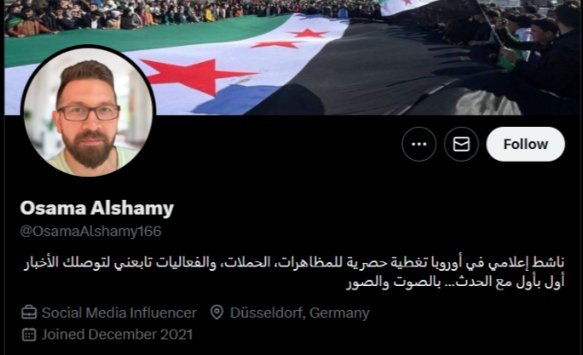
Accounts such as @tmrrah9 and @OsamaAlshamy166 sit at the edges of the network, acting as bridges that link otherwise separate clusters. This intermediary role is key to moving messages across different layers of the campaign, ensuring that core narratives spread widely rather than remaining confined to one group.
The colored clusters on the network map represent distinct sub-communities identified through a modularity optimization algorithm. These clusters are not random—they reflect clear patterns of coordinated grouping:
- Green cluster around @s_hm2030 – The largest and most expansive, made up of accounts seemingly dedicated almost exclusively to retweeting the hub account’s content. Many handles show repetitive numbers, generic avatars, or similar aliases, hinting at partial or full automation.
- Red cluster around @Abumuslim1409 – More tightly knit and internally interactive, functioning as a compact core of engagement.
- Purple cluster (southwest of the map) around @Columbuos – Smaller, with lower levels of interaction compared to the larger groups.
- Orange cluster (bottom of the map) led by @OsamaAlshamy166 – Operates as an independent pocket with dense internal links, suggesting a secondary amplification layer or a parallel campaign with a distinct regional or political slant, possibly tied to pro-Syrian messaging aligned with Saudi narratives.
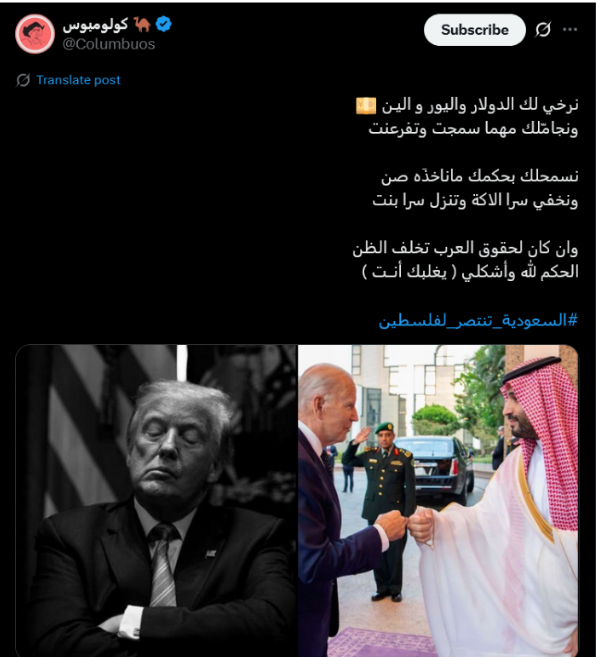
The campaign's structure indicates a highly centralized amplification system rather than an organic discussion. It is built around a few central accounts supported by a network of dense, pattern-based digital arms. Sub-communities show various activation sources, from mass mobilization to semi-automated coordination. A small number of bridge accounts link these clusters, facilitating the smooth flow of narratives throughout the network.
This network mapping helps decode the campaign’s internal dynamics, showing not only who drives the conversation but also how it is strategically managed and layered for spread.
Interestingly, when comparing the interaction networks of #السعودية_تنتصر_لفلسطين (Saudi Arabia Stands With Palestine) and #فلسطين_ليست_قضيتي (Palestine Is Not My Cause)—a hashtag opposing the Palestinian cause—a small but significant overlap emerged.
Around 443 accounts were active on both hashtags despite their conflicting messages, representing roughly 4% of the pro-Saudi network and 7% of the anti-Palestine network. These accounts were not leading either conversation; instead, they acted as cross-network amplifiers, ferrying content between opposing camps to maximize reach and visibility in a politically charged moment.
Analysis of the activity from these bridge accounts revealed strong indicators of coordination or automation. Over 100 accounts exhibited unusually high posting volumes, approximately 250 accounts employed repetitive numerical usernames, and reply or discussion rates stayed exceptionally low. This suggests a primary focus on message flooding rather than engaging in dialogue.
Notably, the Palestine Is Not My Cause network proved even more aggressive, with some accounts pushing up to 400 posts in a single day, compared to the more concentrated but slightly less frenzied activity within the Saudi Arabia Stands With Palestine cluster, which revolved around a tighter core of high-impact influencers.
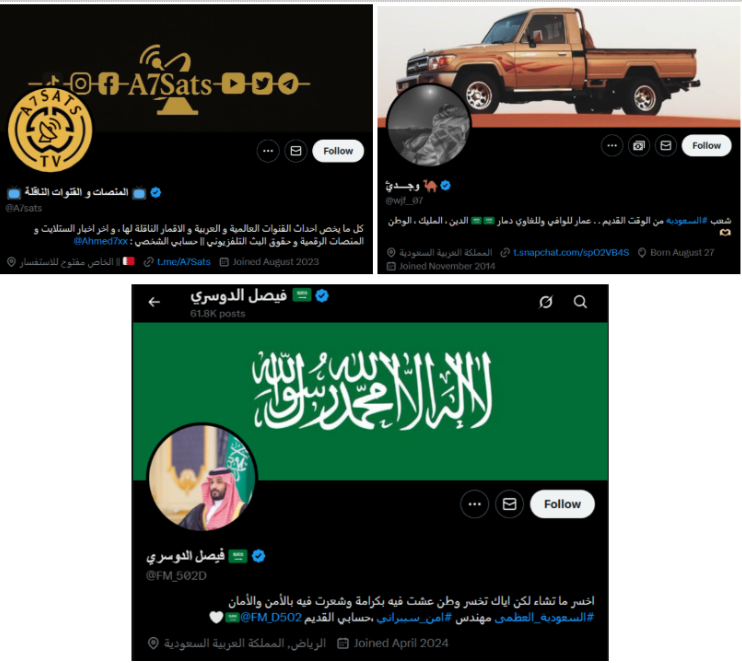
This suggests a connection between the two seemingly conflicting discourses, reinforced by shared accounts that indicate coordinated management or intertwined interests behind the campaign. Examples of these accounts include @rslh1133981, @hi23133253889, @n123455n, @saagr2000, @malsuhaimy065, among others.
Who Is Leading the Campaign?
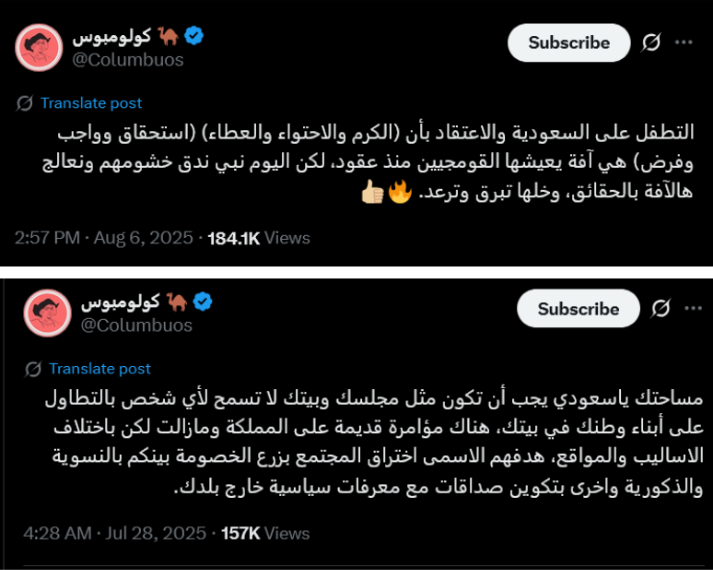
The account @Columbuos is a highly active participant on this hashtag. Arabi Facts Hub's 2024 annual report identified it as one of the most active Saudi accounts involved in coordinated campaigns.
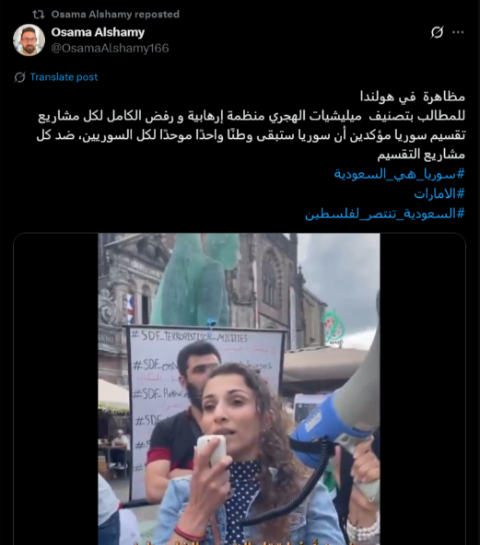
Interaction on the hashtag was also led by @OsamaAlshamy166, an account supporting the new Saudi-backed Syrian authority and opposing Iranian intervention in Syria.
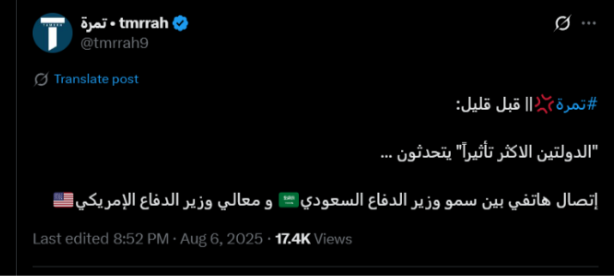
As for the @tmrrah9, it has habitually promoted "Saudi leadership" and "the Chinese dragon" at other times, and glorifies Trump as a "leader with a stance."
